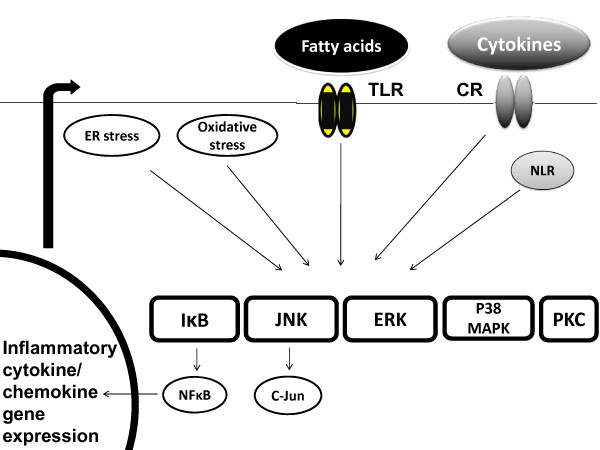Figure 1.
Fatty acids and cytokines utilize similar downstream signaling pathways to activate inflammatory response in obesity. Saturated fatty acids signal via toll-like receptors (TLRs), and cytokines signal via respective cytokine receptors (CR) to activate MAPK enzymes including JNK, ERK, and p38MAPK along with IκB and protein kinase C (PKC) pathways. Other mechanisms include activation of these pathways by NOD-like receptors (NLRs), production of reactive oxygen species and oxidative stress, and endoplasmic reticulum stress (ER stress). The activation of these pathways leads to production of transcription factors including NFκB and C-Jun that enter nucleus and bind specific sequences on gene promoters, and lead to transcription of inflammatory cytokine and chemokine genes. The cytokines produced will act in an autocrine, paracrine and endocrine manner and interfere with insulin signaling. They will also stimulate further cytokine production that will propagate the activation of these pathways, leading to further inflammation.

